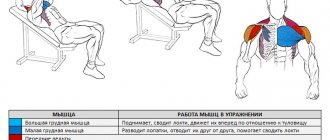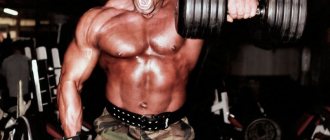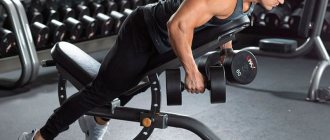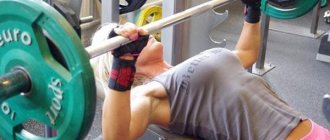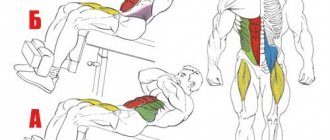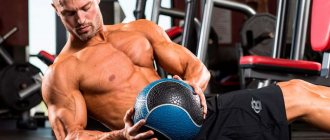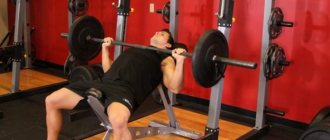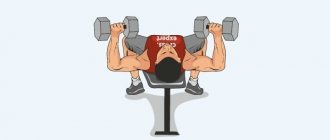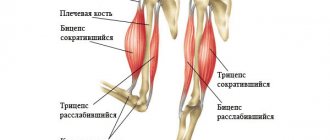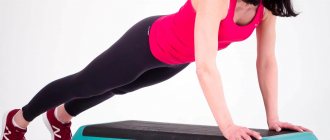Share:
Lifting legs while hanging on a bar (Toes to Bar) is one of the most effective abdominal exercises, due to the fact that when performing it, the body is in a stretched position, so our muscles also receive a colossal load in the negative phase of the movement (when lowering the legs) .
There are several variations of this exercise: hanging straight leg raises, bent leg raises, alternating leg raises, toe raises to the bar, and “angle” (statically maintaining a right angle between the legs and body). We will talk about all of them in more detail below.
Also in our article today we will examine the following aspects:
- What are the benefits of doing this exercise;
- Types of leg lifts while hanging on the horizontal bar and also the technique of performing the exercise;
- CrossFit complexes containing this exercise.
Varieties of leg lift exercises
A lot of time has passed since the creation of this exercise, so specialists and experienced athletes have developed various types of leg lifts that use abdominal muscle groups in different ways.
Let's look at these types and their features:
- Lifts with bent legs. The peculiarity of this exercise is that it allows you to work out the central parts of the rectus abdominis muscles. In the photo of the lying leg raise, we can see that the legs in this case are bent at the knee joint.
- Raises with vertical legs. This type helps in developing the upper sections of the rectus abdominis muscles.
- Leg lifts one at a time. Allows you to work each abdominal muscle most effectively. It is worth mentioning that this exercise can be performed from different angles.
- Lateral leg raises. This exercise helps develop the lateral muscles of the abdomen and torso.
You can see that there are enough types of lifting to choose something to develop exactly the muscles you want.
How many times a week should you exercise
As an exercise, 1-2 sets of 10 repetitions can be done daily in the morning. Without weights, start by raising your legs one at a time. Depending on how you feel, switch to simultaneous lifting. Do not use weights.
To develop strength and abs, 2 times a week is enough. Remember, this is just one of several exercises, so you need to do other exercises to achieve this goal.
To develop endurance, you can train every day. Moreover, do the maximum number of repetitions 2 times a week. On other days - 2-3 sets of 30 times. For beginners, just 2-3 times a week is enough. Believe me, the effect will be noticeable.
What muscles develop
This exercise is very effective and approved by a large number of athletes and specialists. Let's look at the list of muscle groups that will be involved when performing:
- The inner part of the pelvic muscles, that is, the iliopsoas muscles.
- Muscles of the chest, latissimus dorsi, buttocks.
- Deltoid muscles of the shoulder, abdominal muscles, outer and inner thighs.
- Quadriceps.
Leg raises help in developing general fitness and also in developing and strengthening all the muscles of the human body.
Interesting fact
This is a favorite exercise of past champion Mike Francois. He believed that only hanging leg raises help build a strong and sculpted abs, and no twisting can compare with lifting in this great matter. Mike recommended alternating regular hanging leg raises with weights, and a fast tempo with a slow tempo to get better abs. He did the movement three sets to failure, but fitness enthusiasts can limit themselves to 3 sets of 12-15 repetitions. Only experienced athletes should do more.
Preparation and features of the technique
In order to perform this exercise correctly and avoid injury, you need to complete some preparatory measures, which include:
- Choosing options for performing the exercise. It should be noted that there are quite a few variations, so you need to carefully study each of them to choose the option you need. Traditionally, athletes emphasize supine leg raises, which are very suitable for beginners and can be easily performed even at home. Also notable is the leg raise exercise while lying on your stomach, which is also easy to perform and greatly helps in the development of all the muscles of the abdomen and back.
- Preparing the place to perform the exercise.
- Choosing the correct body position.
- Determining the number of repetitions.
You should not neglect warming up before exercise, as damage may be caused to ligaments that are not warmed up. Having completed all the preparatory activities, you should begin the process of direct implementation.
Traditionally, this process looks like this:
- Preparation for execution, that is, acceptance of the starting position.
- Before performing, you need to relax your body and put your hands under your back.
- Next, the legs are straightened and brought closer to each other.
- Raising the legs upward should be done at an angle of ninety degrees with the legs held at the highest point for several seconds.
- When lowering your legs, you should leave a distance between them and the floor of fifteen to twenty centimeters for greater load.
- Repeat this process several times.
In general, you can see that this process is not complicated and is extremely clear, so every novice athlete can handle it.
Special exercises used in the second stage of the acute period
| I.p. lying down, legs bent. Raising the sacrum with support on the lower thoracic spine and feet due to kyphosis of the lumbar spine. |
| I.p. lying down, legs bent. Raising the head while simultaneously tightening the abdominal muscles. |
| I.p. lying down. Static tension of the gluteus maximus muscles. 8-10 voltages each for 4-6 s. |
| I.p. lying down, legs bent apart. Left hand up - inhale. Lower your hand forward-down-inward, raise your head and shoulders, stretch your hand to your right knee - exhale. Same with the other hand. |
| I.p. lying down. Alternating leg bends. When straightening, press your foot onto the bed, while kyphosis of the lumbar spine. |
| I.p. lying down. The same exercise as No. 17, but performed with both legs at the same time. |
| I.p. lying down, a cushion under your feet, lifting the pelvis due to kyphosis of the lumbar spine. |
| I.p. emphasis on the knees. Sit on your heels without lifting your hands from the bed and return to the standing position. When returning to the IP don't bend! |
| I.p. emphasis on the knees. Flexion of the spine (without bending down when returning to IP!) |
Advantages and disadvantages of this exercise
Many experts and experienced athletes note a number of disadvantages and advantages that are typical for leg lifts.
Among the positive properties are:
- High-quality training of the abdominal muscles.
- Possibility of focusing the load on different parts of the abdomen.
- Help in preventing inguinal and umbilical hernias.
- Helps in preventing changes in the positions of human internal organs, especially the colon.
- Ease of implementation.
- No need for additional devices and devices.
- Development of many muscle groups.
Among the disadvantages are:
- Contraindications for people with back or leg problems.
- Frequently performed incorrectly, which can lead to some injuries.
As we can see, the advantages of this exercise far outweigh the disadvantages. Incorrect technique can be corrected as the exercise progresses as the technique gradually improves and sharpens.
Tips and tricks for implementation
Many experienced athletes willingly share their experience in performing leg raises. They give a lot of recommendations.
Let's look at some basic tips:
- You should keep your legs level throughout the entire process.
- You should not touch the floor with your feet so as not to disrupt the loading process.
- Correct breathing should be observed: raise as you exhale, lower as you inhale.
- Under no circumstances should you proceed if you have contraindications to this in the form of back or spinal diseases.
- Watch the position of your tailbone if you perform leg raises on a bench.
You should maintain the established pace and do not make sudden movements.
Bad habits that worsen musculoskeletal health
In Fig. 17-22 show some examples of incorrect (left) and correct (right) performance of everyday poses and movements of children and adolescents.
| ❌ ✔ | ❌ ✔ |
|
|
| Rice. 19 | Rice. 20 |
| Rice. 22 |
Typical beginner mistakes
Beginners often make mistakes when performing this exercise.
Let's look at the most typical ones:
- Lack of special gymnastic mats, which increases the risk of back diseases.
- Failure to maintain the optimal pace and sudden movements.
- Performing exercises with lower back pain.
- Wrong choice of angle.
- Perform the exercise immediately after eating.
- Lack of warm-up activities.
